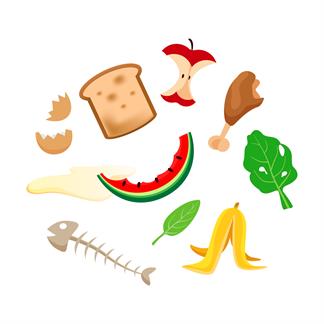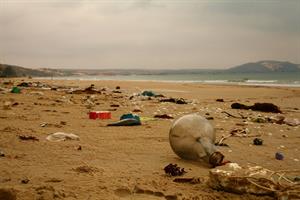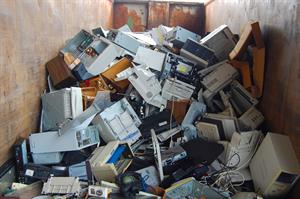PDF chapter test TRY NOW
To protect the environment, it is important to reduce and manage the generation of wastes and to maximise the recycling.
Waste is any substance or material that has been used and is not wanted or used anymore.
It is because it is broken, worn out, or does not have any purpose. Everyone generates waste, and the waste has an impact on the environment and ecosystem. However, most of us do not know where the generated garbage goes.
There are many types of waste, which includes:
- Liquid waste (present in drains)
- Gases hiding in air (pollutants that arise from factories), and
- Solid waste (garbage) that is thrown away in the waste bins.
Solid wastes can be classified into:
- Biodegradable wastes
- Non-biodegradable wastes
Biodegradable Garbage:
Garbage that can decay or decompose by natural agents like water, oxygen, ultraviolet rays of sun, microorganisms are called biodegradable wastes.
When vegetable and fruit peels, dead leaves are thrown out, it is acted upon by microorganisms like bacteria, fungi, or small insects.
Example:
Biodegradable wastes includes fruit and vegetable peels, leftover cooked food, paper, cotton, animal products like wool, leather, cow dung, silk, garden wastes like grass, leaves, twigs and weeds.
Oxygen, moisture, water, and heat facilitates the decomposition of complex organic material to simpler and harmless substances. Decomposed substance mixes with the soil to provide various minerals and nutrients to the soil.
Biodegradable wastes are also called as an organic wastes.

Biodegradable waste
Non-biodegradable Garbage:
Garbage that cannot be broken down or decomposed in the soil by microorganisms and natural agents are called non-biodegradable.
Garbage not derived from plants and animal sources are non-biodegradable.
Example:
Plastic bags, glass bottles, metal scraps, aluminium cans etc.
Important!
1. Electronic wastes like mobile, laptop, computer, kitchen appliances like microwave oven, household appliance like clothes iron are all non-biodegradable.
2. Domestic hazardous waste like discarded paint drums, CFL bulbs, tube lights, expired medicines, used batteries, used needles and syringes are also non-biodegradable and discarded separately.
Non-biodegradable items are immune to the natural process, and thus cannot be decayed or broken into simpler substances even after thousands of years. Thus, the removal of the non-biodegradable materials is a problem as it does not decay, and produces poisonous gases when burnt.

Accumulation of plastics

E-waste
